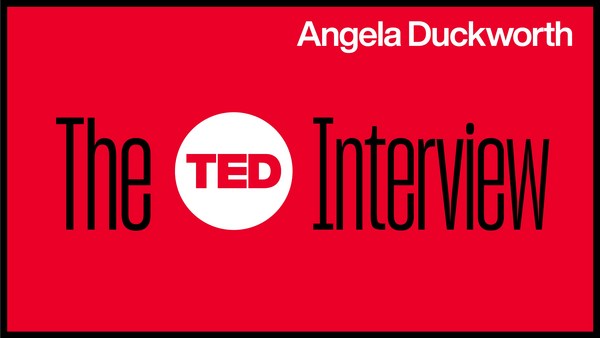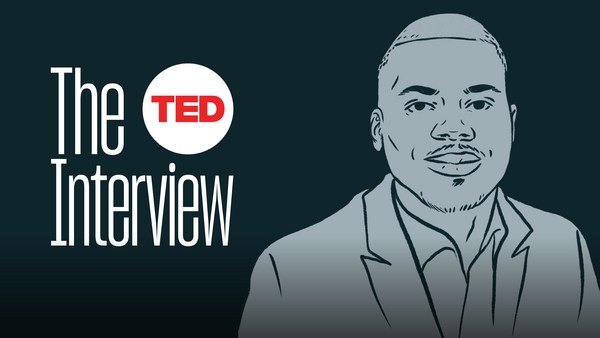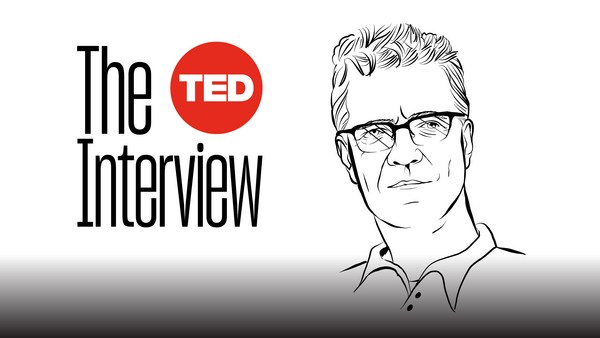Steven: Hi there, I’m Steven Johnson. Don’t worry, you’re in the right place. This is the TED interview, and I am the new host. If you’re curious about who I am and where Chris Anderson went, I really encourage you to listen to last week’s episode. Chris interviewed me, and then I flipped the script, then asked him a few questions. It was a great conversation. But now, on to this week’s show. If I were to ask you, what you were thinking about right before you pressed play on this podcast, there’s a good chance you were thinking about the future. A few years ago, a psychologist in Chicago performed a fascinating experiment to capture where people’s mind wondered when they are left to their own devises. The scientist built a system to ping people at random times during the day to asked them, “At this exact moment, what are you thinking about?” And it turned out that people were, almost obsessively, imagining future events. Everything from tonight’s dinner plans to the summer’s vacation, to their worries about having enough retirement savings in the bank. The study found that people were three times more likely to be thinking about the future than about the past. Now, there’s a growing body of evidence that suggests our ability to think about the future, to imagine multiple scenarios, both short term and long term, maybe a cornerstone of our intelligence as a species. But it also raises an interesting possibility, that maybe we could train ourselves to get better at thinking about the future. Both at the arc of our own lives and carriers but also, for society itself. And that’s what we’re going to explore during this episode of The TED Interview. Consider this a crash course on how to become a futurist. Jane: We have this banner in our offices in Palo Alto and it expresses our view of how we should try to relate to the future. We do not want to try to predict the future. What we want to do is to make the future. We want to imagine the best-case scenario outcome and then we want to impower people to make that outcome a reality. Steven: That’s today’s guest, Jane McGonigal, on the TED stage in 2010. I think it’s probably fair to say that, if you’re interested in learning how to forecast future events, or better yet, change the course of those future events, it’s hard to imagine a better guide than Jane. She’s both a professional future forecaster and a game designer. As director of game research and development at the Institute of the Future, she creates immersive social simulations to help us imagine and predict how we’ll respond to otherwise hard to imagine futures. She also has a new book, called “Imaginable”, which offers a set of practical tools based on recent neuroscience and psychology, that we can bring into our everyday life. They help us get our brains out of their default settings, and how we can use games to teach ourselves to start noticing little signs of change and see possibilities for the future all around us. So, throw away your crystal balls, we’re going to dive into the future using science. And also, video games. [music] Steven: Jane McGonigal, welcome to the TED Interview. Jane: Thank you Steven, I’m glad to be here. Steven: So, this is a conversation largely about the future, and how to think more intelligently and creatively about it. But I wanted to start in the past actually, which is where your book “The Imaginable” starts. Because more than a decade ago, you ran not one, but two projects with thousands of people involved. That simulated, a global future pandemic, involving a respiratory virus. With simulations that ended up anticipating many things that we have lived through over the last two years with COVID. So, I thought we start there, and maybe you can just set the stage for us and explain how these projects came about. You know, what were their ultimate mission was? Jane: Great, so, this type of future forecasting game is called the social simulation. And it’s social because it’s not the kind of simulation where you put a bunch of algorithms into a machine, and you crank them and see what the machine predicts happened. You know, this many people will get sick, this many people will lose their jobs, this many people will die. That’s not our kind of simulation. At the Insitute for the Future, we say we’re low on algorithms, but high on social and emotional intelligence. We asked thousands of people, what would they do and feel, if they woke up in a particular future scenario. And when I first started making these games, the first big game was in 2008 called super struck, and we had just under 8,000 people spend six weeks imagining, what they would do, how would they adapt, and how would they try to help others, if they were living through this respiratory pandemic. We called it respiratory distress syndrome. And they played on a private social network. So, it’s like you’re on Facebook but ten years into the future, you’re on Twitter but ten years into the future. That game was set in the year 2019, we followed up in 2010, where we had 20,000 people this time. Again, on a private social network sharing stories about how they would try to help others. With not only a respiratory pandemic that started in China, but complicating scenarios, we imagined. Like, a misinformation, global conspiracy theory campaign on social media led by a group in our game called Citizen X. And we imagined historic wildfires on the West Coast of the United States, and there were supply chain disruptions. We had a mom saying, I’m imagining not going to work because schools are closed, and I’m gonna have to stay at home and I don’t know how I am going to get my work done. So, we were able to anticipate just by asking ordinary people, this kind of surprising ripple effect or social consequences, that many experts in public health or epidemiology, weren’t really thinking about, this sort of irrational behaviors. We were able by talking to ordinary people, allowing them to be experts in their own futures, what would they want, feel, and need, to get a lot of really actionable intelligence. And it was just, you know, I had to say as a futurist, we’re always looking at about ten years out, it’s out of the favorite timeline. So, in some ways, it’s just, I think, it’s weird dumb luck that the game was set in the year 2019 and 2020, and just sort of uncannily turn out to be exactly when we lived through what we imagined. Steven: I think it sounds suspiciously accurate, it’s the way I think about it. No, it’s fascinating. And I wonder, if you just explain a bit more about for someone participating in this game, and we’re gonna go back to this idea of in your wour work and in futurism in general. But for the time being, just explain to us how you actually engage, or is it kind of role playing, are you describing the events as if they are happening and you just sharing imagined stories from an imagined future. Is that what it looks like? Jane: Exactly.I mean, really, if if people could just imagine their experience on social media and news.


